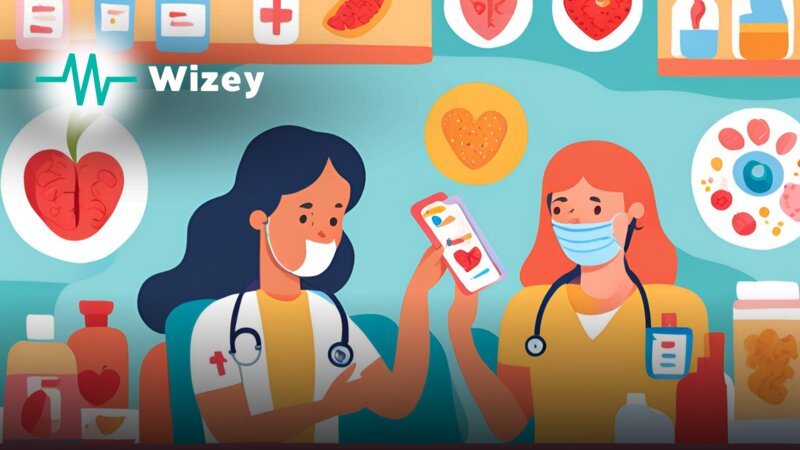🩺 Your Body's Intelligence: A Guide to Preventive Screenings

Medical Disclaimer: This article is for informational purposes only and does not constitute medical advice. The recommendations provided are general and may not apply to your specific health situation. Always consult with a qualified healthcare professional for personalized advice and before making any decisions about your health.
Imagine your health is a high-performance engine. Would you wait for it to start smoking and seizing on the highway, or would you prefer to give it regular tune-ups, checking the oil, and listening for the faintest signs of trouble? In medicine, this proactive maintenance is called preventive screening. It’s not about finding disease; it’s about intercepting it. It’s a strategic shift from reacting to illness to proactively managing wellness.
The data is staggering: if everyone in the U.S. received their recommended preventive care, over 100,000 lives could be saved each year. Yet, so few of us utilize this powerful toolkit. This guide is your deep dive into the science, history, and future of this “early warning system” for your body.
🕵️♂️ Medical Detectives: The Origins of Screening
The history of screening is a series of brilliant detective stories. In the 1940s, Dr. George Papanicolaou developed the Pap smear, a test that transformed cervical cancer from a common cause of death into a largely preventable disease. By examining cervical cells under a microscope, he could spot abnormalities long before they became malignant—like a detective finding clues at a scene before the crime is committed.
Mammography has its roots in industrial X-ray technology, originally used to find flaws in metal castings. The principle is elegantly simple: different densities of breast tissue absorb X-rays differently, creating a detailed map of shadows and light. A trained radiologist can read this map to distinguish between normal tissue and potential threats.
The impact of this work is undeniable. Breast cancer detected at Stage I has a 99% survival rate. This isn’t just about numbers; it’s about decades of life reclaimed.
🔬 The Science of You: A Deeper Look at Key Screenings
Modern tests are sophisticated tools, each designed to monitor a specific aspect of your body’s complex systems.
Cardiovascular Health: The Engine Room
Your cardiovascular system is the intricate network of highways that keeps your body running. Monitoring it is crucial, and it starts with simple but powerful tests. For a deeper dive, it’s also worth understanding specific cardiac markers that signal heart health.
- Blood Pressure: This simple measurement is vital. It reflects the force of blood against your artery walls. High blood pressure (hypertension) is a “silent killer” because it often has no symptoms but dramatically increases the risk of heart attack and stroke by slowly damaging your circulatory system.
- Lipid (Cholesterol) Panel: This blood test is more than just one number, offering a detailed look into how your body manages fats. Understanding the nuances between the “good, the bad, and the ugly” types of cholesterol is a key step in managing your heart disease risk. It measures several key markers:
- LDL (Low-Density Lipoprotein): Often called “bad” cholesterol. High levels can lead to plaque buildup (atherosclerosis) in your arteries, narrowing them and restricting blood flow.
- HDL (High-Density Lipoprotein): Known as “good” cholesterol. HDL acts like a scavenger, carrying LDL cholesterol away from the arteries and back to the liver to be broken down.
- Triglycerides: A type of fat in your blood that your body uses for energy. High levels, often linked to diet and lifestyle, also contribute to artery hardening.
Metabolic Health: The Fuel System
- Blood Sugar (Glucose) & HbA1c: A fasting glucose test provides a snapshot of your blood sugar at one moment. For a longer-term view, the HbA1c test is crucial. It measures your average blood sugar level over the past 2-3 months, giving a much clearer picture of your diabetes risk and control.
- Thyroid Panel (TSH): The thyroid is your body’s master metabolic regulator. This test checks for Thyroid-Stimulating Hormone (TSH) to ensure your thyroid isn’t overactive (hyperthyroidism) or underactive (hypothyroidism), both of which can cause a cascade of health issues, from fatigue to heart problems.
Cancer Screenings: The Security System
- Colonoscopy: This is the gold standard for colorectal cancer prevention. It’s an internal expedition using a flexible camera to inspect the entire colon. Its unique power lies in the ability to not just find but also remove precancerous polyps during the same procedure—effectively stopping cancer before it starts.
- Pap & HPV Tests: For cervical cancer, the Pap test looks for abnormal cells, while the HPV test looks for the human papillomavirus that causes most of these cancers. Using them together provides a powerful, multi-layered defense.
- Mammogram: This low-dose X-ray of the breast is the most effective tool for detecting breast cancer in its earliest, most treatable stages.
🚀 The Technological Revolution: The Future is Now
We are living through a renaissance in medical technology that is making screening smarter, faster, and more personalized.
- Artificial Intelligence (AI): AI is now a radiologist’s “second pair of eyes.” As we’ve explored previously, AI simplifies the understanding of medical tests by processing vast amounts of data to find patterns. These algorithms are trained on millions of images to spot subtle anomalies in mammograms, CT scans, and MRIs that might elude the human eye, dramatically improving diagnostic accuracy.
- Liquid Biopsy: This is one of the most exciting frontiers in oncology. A simple blood test can detect circulating tumor DNA (ctDNA)—tiny fragments of genetic material shed by cancer cells into the bloodstream. This holds the promise of detecting cancer anywhere in thebody, long before it would show up on a traditional scan.
- Wearable Technology: Your smartwatch is no longer just a gadget; it’s a personal health monitor. Devices that track heart rate variability, blood oxygen levels, and can even perform a single-lead ECG are creating a continuous stream of health data, empowering individuals and their doctors with unprecedented insight.
🧬 Beyond the Basics: Crafting Your Personalized Screening Blueprint
Standard guidelines are a starting point, but your optimal screening plan is unique to you. It should be built on a deep understanding of your personal risk factors.
- Family History: This is your genetic blueprint. If a close relative (parent, sibling, child) had a serious disease like cancer, heart disease, or diabetes, your own risk is often higher. Your screening for that condition should likely start earlier and be more frequent. For example, if your father had colon cancer at 50, your first colonoscopy should be at age 40, not 45 or 50.
- Lifestyle Choices: Your daily habits have a profound impact. Smoking dramatically increases the need for lung and cardiovascular screening. A diet high in processed foods points to more frequent metabolic checks. High-stress jobs or lifestyles might warrant more attention to cardiovascular health.
- Environmental Exposures: Where you live and work matters. Exposure to certain chemicals, air pollution, or even high levels of sun can influence your risk for specific conditions and should be factored into your screening plan.
💡 Making Prevention a Priority
- Find a Primary Care Physician: A long-term relationship with a doctor you trust is the cornerstone of good preventive care.
- Keep Your Own Records: Track your screening dates and results. You are the CEO of your own health.
- Set Reminders: Don’t rely on memory. Schedule your next appointment before you leave the current one.
- Address Anxiety: It’s normal to feel anxious about a medical test (“scanxiety”). Talk to your doctor about your fears. A core part of this is learning how to understand your medical test results without panic. Remember, knowledge is power, and an early, treatable finding is infinitely better than a late-stage diagnosis.
Preventive screenings are not about fearing the future. They are about taking control of it. The time you invest in them today is the single greatest investment you can make in a long, vibrant, and healthy life tomorrow.
Quick Guide to Key Screenings
| Age Group | Key Screenings | Frequency |
|---|---|---|
| 18-39 | Blood Pressure, Cholesterol Panel, Skin Exam, Dental & Vision Checks, Pap/HPV Test (women) | Every 1-5 years, depending on test & risk |
| 40-49 | All of the above + Mammogram (women), Diabetes/HbA1c, Colorectal Cancer Screening (from 45) | Annually to every 10 years |
| 50-64 | All of the above + Bone Density (women), Prostate discussion (men), Lung Cancer (for current/former smokers) | Annually or as recommended by your doctor |
| 65+ | All of the above + Cognitive Assessment, Fall Risk, Hearing Test, specific vaccinations | Annually or based on personalized plan |
Do I really need every screening recommended for my age?
Not necessarily. These are evidence-based guidelines for the general population. Your doctor will create a personalized plan tailored to your unique health history, family history, and lifestyle. Some tests may be needed more or less frequently.
How reliable are at-home screening tests?
Some at-home tests, like stool-based FIT tests for colon cancer or blood sugar monitors, are reliable tools for initial screening. However, they are not a substitute for a doctor's consultation. Any abnormal result from an at-home test must be followed up with a healthcare professional for definitive diagnosis.
How should I prepare for a screening test?
Preparation varies widely. Blood tests for lipids or glucose often require fasting for 8-12 hours. Procedures like a colonoscopy require a more extensive bowel preparation. Always follow the specific instructions provided by your doctor's office to ensure the test results are accurate.




